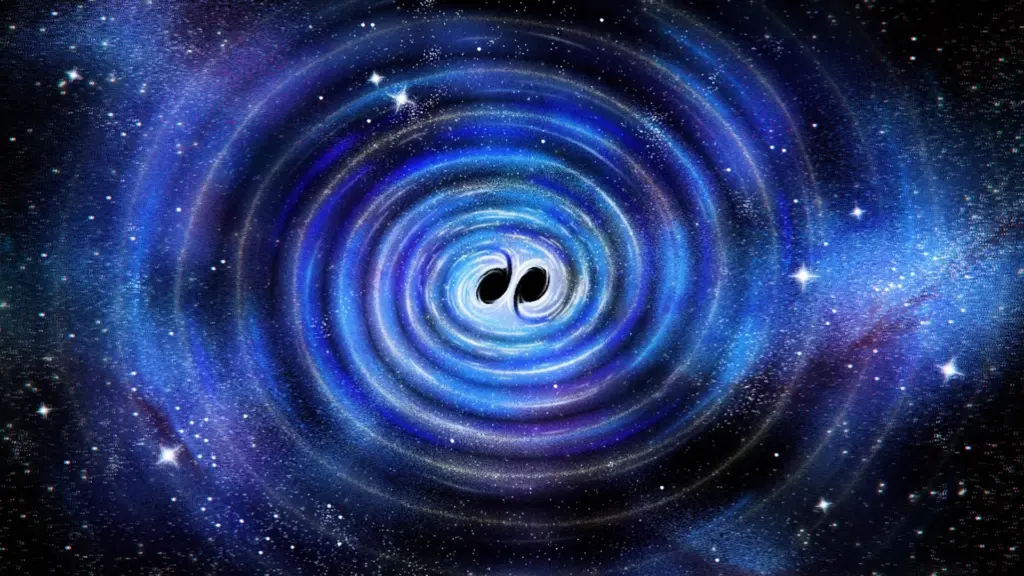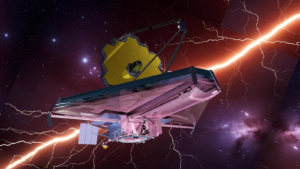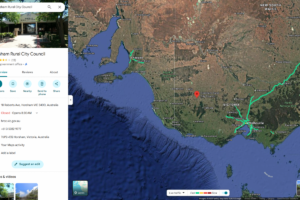
The Laser Interferometer Gravitational-Wave Observatory (LIGO) has made groundbreaking measurements that provide new insights into black holes and the nature of space-time. Led by astrophysicists Maximiliano Isi and Will Farr from the Flatiron Institute’s Center for Computational Astrophysics in New York City, the analyses reveal how quantum physics and Einstein’s general relativity may interconnect.
“This is the clearest view yet of the nature of black holes,” said Isi, who also serves as an assistant professor at Columbia University. “We’ve found some of the strongest evidence yet that astrophysical black holes are the black holes predicted from Albert Einstein’s theory of general relativity.” These significant findings were published on September 10 in the Physical Review Letters by the LIGO-Virgo-KAGRA Collaboration.
Understanding Black Holes and Gravitational Waves
Black holes represent the final evolutionary stage for massive stars, characterized by their extreme density that prevents even light from escaping their gravitational pull. When two black holes collide, they create distortions in space known as gravitational waves, which ripple across the universe much like sound waves emanating from a struck bell.
These gravitational waves provide scientists with valuable information about the black holes that generate them. Observatories such as LIGO in the United States, Virgo in Italy, and KAGRA in Japan are equipped with instruments that detect these waves by measuring the time it takes for a laser to travel a specific path. As gravitational waves alter space-time, they cause minute changes in the instrument’s length, which scientists measure with high precision to determine the black holes’ characteristics.
Advancements in Detection and Analysis
The recent gravitational waves were detected from a merger creating a black hole with a mass equivalent to 63 suns, spinning at 100 revolutions per second. This discovery follows a decade after LIGO’s first detection of a black hole merger. Since then, technological advancements have enhanced the clarity of these cosmic events.
“The new pair of black holes are almost twins to the historic first detection in 2015,” Isi noted. “But the instruments are much better, so we’re able to analyze the signal in ways that just weren’t possible 10 years ago.”
With the improved signals, Isi and his team could observe the entire collision sequence, from the initial impact to the final reverberations as the merged black hole stabilized, occurring milliseconds after contact. Previously, capturing these final reverberations was challenging due to their faintness, making it difficult to distinguish between the collision’s ringing and that of the final black hole.
Testing Theories and Expanding Knowledge
In 2021, Isi pioneered a method to isolate specific frequencies or ‘tones’ using data from the 2015 black hole merger. Although powerful, the earlier measurements lacked the clarity needed to confirm key black hole predictions. The new, precise measurements allowed Isi and his colleagues to confidently isolate the milliseconds-long signal of the settled black hole, enabling more definitive tests of black hole nature.
“Ten milliseconds sounds really short, but our instruments are so much better now that this is enough time for us to really analyze the ringing of the final black hole,” Isi explained. “With this new detection, we have an exquisitely detailed view of the signal both before and after the black hole merger.”
Confirming Theories from Einstein and Hawking
The observations allowed scientists to test a longstanding conjecture that black holes are fundamentally simple objects. In 1963, physicist Roy Kerr used Einstein’s general relativity to describe black holes with a single equation, suggesting that astrophysical black holes can be characterized solely by their spin and mass. The new data enabled precise measurement of the merged black hole’s ringing frequency and duration, confirming its simplicity.
Additionally, the observations tested Stephen Hawking’s area theorem, which posits that a black hole’s event horizon can only grow. This required exceptional pre- and post-merger measurements. Although initially deemed impossible, by 2019, methods had advanced enough to tentatively confirm Hawking’s theorem, a year after his death. With improved resolution, the new data provides stronger evidence supporting the theorem.
Confirming Hawking’s theorem also suggests connections to the second law of thermodynamics, which states that entropy, a measure of disorder, must increase or remain constant over time. Understanding black hole thermodynamics could advance quantum gravity research, which seeks to unify general relativity and quantum physics.
“It’s really profound that the size of a black hole’s event horizon behaves like entropy,” Isi remarked. “It has very deep theoretical implications and means that some aspects of black holes can be used to mathematically probe the true nature of space and time.”
Future Prospects in Black Hole Research
As black hole merger detections continue, they promise to unveil more about these enigmatic objects. Over the next decade, detectors are expected to become ten times more sensitive, facilitating more rigorous black hole characteristic tests.
“Listening to the tones emitted by these black holes is our best hope for learning about the properties of the extreme space-times they produce,” said Farr, a professor at Stony Brook University. “And as we build more and better gravitational wave detectors, the precision will continue to improve.”
Isi added, “For so long, this field has been pure mathematical and theoretical speculation. But now we’re in a position of actually seeing these amazing processes in action, which highlights how much progress there’s been—and will continue to be—in this field.”






